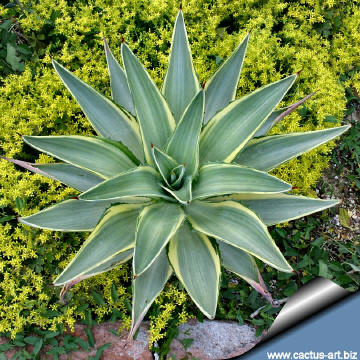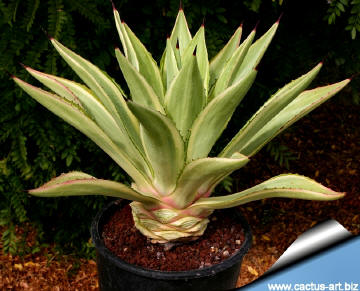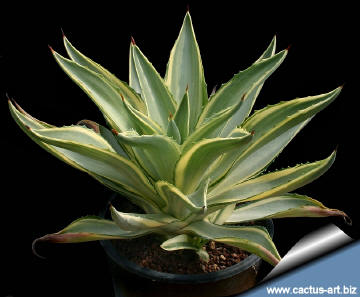-
x
Description
The “Joe Hoak” is one of the prettiest and priced Agave and is much nicer than the photo can show. Very desirable because of the beautifully variegated foliage in soft yellows, cream and green. Family: Agavaceae Scientific Name: Agave desmetiana hort. ex Baker (1877) (nom. illeg.. Art. 53.1 Origin: The 'Joe Hoak' is a nursery produced cultivar, the standard A. Desmetiana is found in cultivation only, its ancestors maybe from Sinaloa (Mexico), maybe from Cuba
| |
| Description: Agave desmetiana (a.k.a. Smooth agave) is a suckering succulent that forms an upright urn-shaped rosette up to 60 cm tall by 90 cm wide. It is quick growing and often produces many offsets. | |
 | |
| Cultivation: Agave "JOE HOAK" is a relatively easy-to-grow species. Seems pretty wimpy in hot, blazing sun, but does great in partial sun to shade. It is relatively cold sensitive for an Agave, Just a light freeze (-2° C) for an extended period can burn some leaves (but can survive to at least – 6°, particularly when dry, even though portion of a mature plant can ‘melt’)... but it's too beautiful to risk not covering it on cold nights. Propagation: Exclusively by suckers which often are found growing around the base of the plant, Remove the basal suckers (if available) in spring or summer and let the cuttings dry for a few days before inserting in compost. It may also propagate by bulbils found on the floral stalk. | |

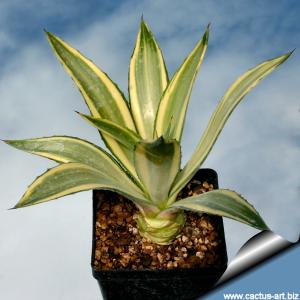
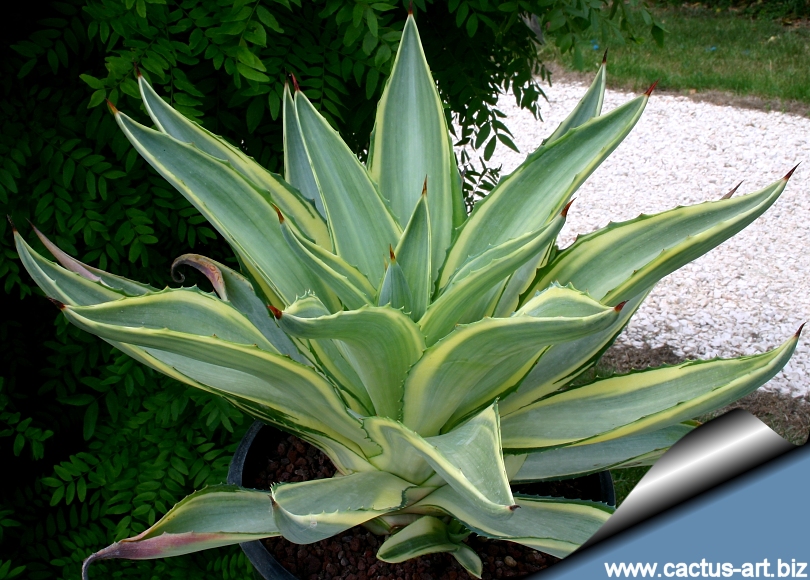 The “joe hoak” is one of the prettiest and expensive Agave and is much nicer than the photo can show. Very desirable because of the beautifully variegated foliage in soft yellows, cream and green.
The “joe hoak” is one of the prettiest and expensive Agave and is much nicer than the photo can show. Very desirable because of the beautifully variegated foliage in soft yellows, cream and green. 